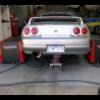Recommended Coilovers For Street Drifting?
Announcements
-
Similar Content
-
Latest Posts
-
I have a 2 lt in Sydney. It was fitted on a R33 GTR, not used for several years . If you are interested email me on: [email protected] I'm not on this forum much .
-
Welcome. Do you plan to race? Or is this more of a weekend toy?
-
First of all, welcome. secondly.... Has anyone doe a v12 RB yet? I've seen the 2J one.
-
Welcome. Potential is similar to pretty much every other car. Comes down to your budget and engineer(to make it legal).
-
Welcome. That colour looks amazing on your car! Focus on registration fails and safety items first. Then, some of the nicer to haves. I have(previously) used my GTR as a daily(with a dog box at one point) and it wasnt that big an issue at the time. Keep us updated, as i would love to see progress.
-









Recommended Posts
Create an account or sign in to comment
You need to be a member in order to leave a comment
Create an account
Sign up for a new account in our community. It's easy!
Register a new accountSign in
Already have an account? Sign in here.
Sign In Now